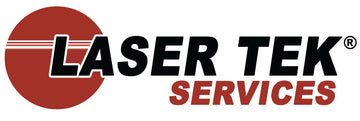Early Chinese civilization employed 1 or 2 types of substrates that made the antiquated system of printing system much more easier. The availability of a wide range of substrates in this day and age has placed printer manufacturers into a tight spot. A universal printer with an inkjet printer ink formula that will be compatible to a wide-ranging variety of substrates is likely needed.
So far, 2 types of inkjet printer ink formula have emerged in the effort to meet this requirement. The first one is called the aqueous or latex-water based ink while the other ink type is the solvent based ink. Let us discuss below the ink types in detail.
The aftermarket for printer consumables has been around since the 90s. Today, it is a fast growing industry. Be updated on the latest happenings with the toner cartridge remanufacturing industry.
Aqueous water based inks. Often used in home and office desktop printers, the water based ink is actually a mixture of water, glycol and dyes or pigments (or both). While this type of ink is not expensive to produce, it is however difficult to control when sprayed on the surface of media. More often, media used is coated with this ink to improve print quality. The HP inkjet printer ink for example includes as additive sulfonated polyazo black dye (used as dye for leather), nitrates and other compounds, obviously to improve the character of ink. Aqueous inks are used in printers running on thermal inkjet head technology where water is necessary for efficient performance.
Aqueous Ink has been found to provide the widest color gamut and produce vivid colors as well. This ink type is also known to be durable and resistant to ultraviolet rays.But because it is water based, the printed output is not waterproof and therefore requires special coating (lamination) after printing. Dye based inkjet printer ink is also prone to rapid fading when exposed to light. Thus, most aqueous ink are now pigmented.
Solvent based inks. Inkjet printer ink of this type integrate volatile organic compounds (VOC) into its formula. VOCs are reactive compounds responsible for the delivery of high pressure during printing. Instead of dyes, color pigment is used as colorant in line with its fade-resistant characteristics. Consequently, VOC content serves as a disadvantage to solvent inks. Said compounds have been found to pose hazards to the environment and to human health as well which has been the subject of much controversy lately. Solvent based inks are applicable for use on uncoated vinyl substrates utilized for outdoor signages such as vehicle graphics, billboards and banners.
Reuse empty toner cartridges and save as much as 80% on printing costs. Visit http://www.lasertekservices.com and shop for the toner refill kit compatible with your cartridge.
Depending on ink type, either solvent or water is integrated with the inkjet printer ink formula for the purpose of improving the viscosity of liquid so that it can be easily sprayed on media surface. While solvents are quick to dry by nature of rapid evaporation, water needs heaters and consistent airflow to dry and cure water based printouts.





